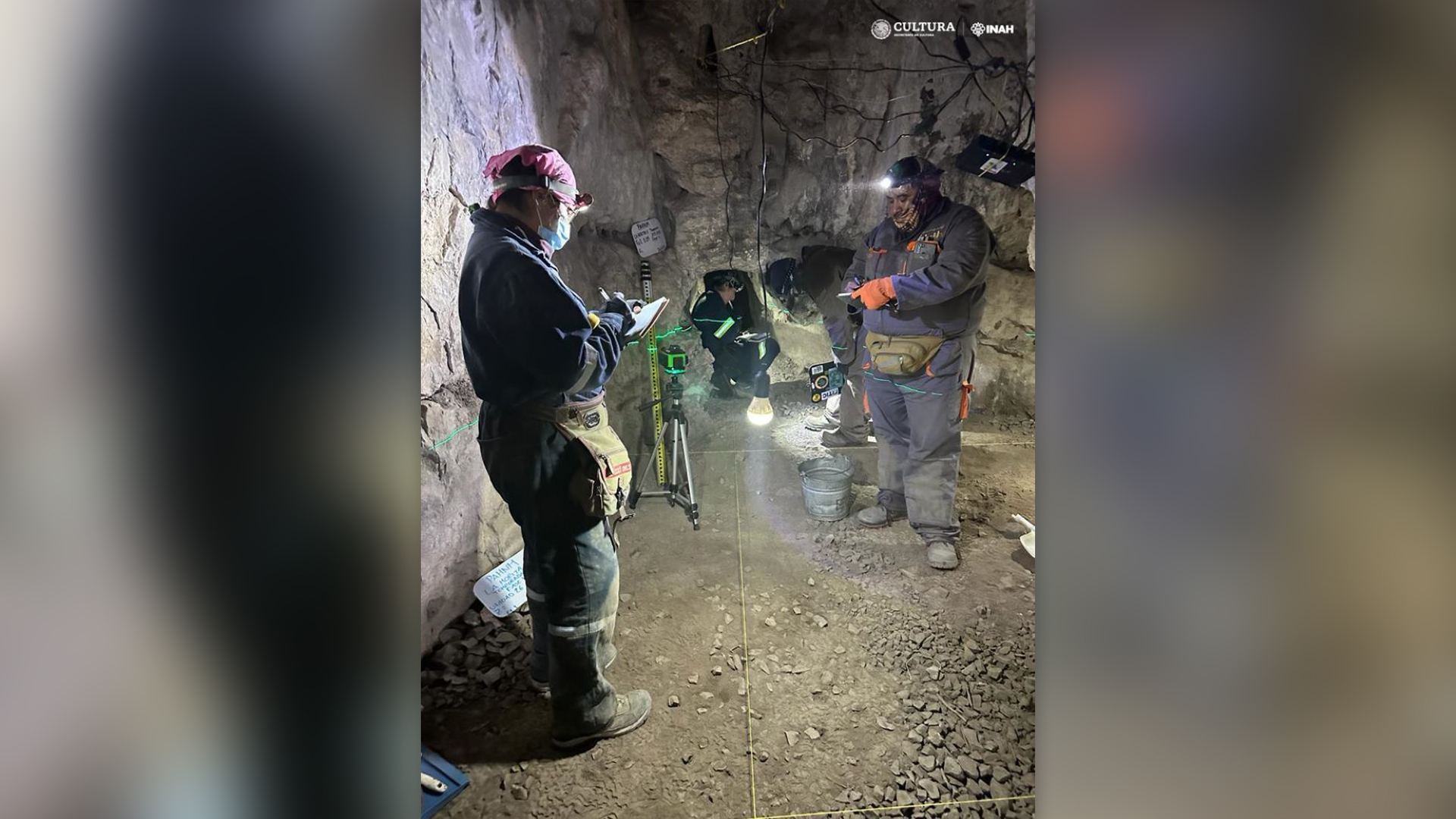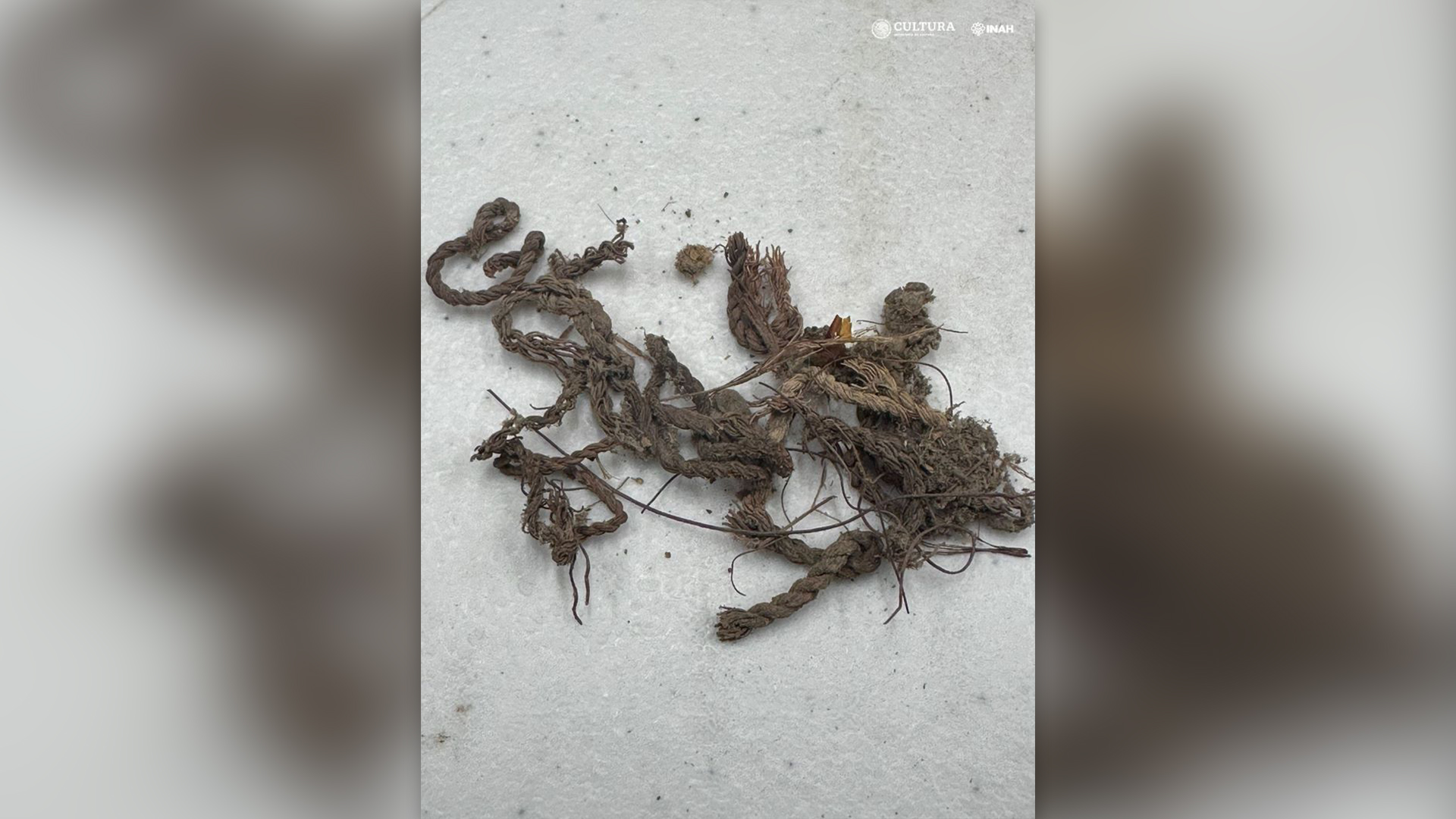2,500-year-old burials of 3 people discovered in a cave in Mexico
Archaeologists found the remains of two adolescents and one baby in the chamber of a cave, but it's not yet clear how they died.

The 2,500-year-old burials of three people, buried with a variety of grave goods, have been discovered inside a cave in northeastern Mexico.
An analysis of the skeletal remains revealed that two of the people were adolescents and one was a baby, Mexico's National Institute of Anthropology and History (INAH) said in a translated statement. Remnants of basketry, textiles and fibers were found alongside the human remains — a clue that the dead may have been buried in bundles made of those materials in what is now the Mexican state of Nuevo León, the statement said.
The remains were found in pieces and it's possible that they were ritually dismembered; however detailed osteological analysis has not been done.
Related: 'This is complete nonsense': Scientists rail against 'alien' bodies shown before Mexican congress

The dead were also buried with beads crafted from freshwater shells, some of which originated 186 miles (300 kilometers) away, to the east toward the Gulf of Mexico, said Moisés Valadez Moreno, an archaeologist with the INAH who excavated the remains, told Live Science in an email, noting that remains of seeds, spearpoints and plants were also found.
The human remains date to sometime between 3,000 and 2,500 years ago, the statement said. This window includes a time that archaeologists sometimes call the "Preclassic" period in Mexico. During this time, the peoples who lived in northern Mexico engaged in long-distance trade and practiced a variety of lifestyles, including hunting and gathering and growing crops, wrote historians Alfredo López Austin and Leonardo López Luján in their book "Mexico's Indigenous Past" (University of Oklahoma Press, 2001).
The relationship among the three people found in the cave is still unclear; osteological and DNA studies would need to be done to determine this, Valadez Moreno said. The proximity of their remains and location in the same soil layer suggest that the three people may have died around the same time, he noted. It's also not clear how the three people died, although future analyses may shed light on this, Valadez Moreno said.
Sign up for the Live Science daily newsletter now
Get the world’s most fascinating discoveries delivered straight to your inbox.
Excavations at the cave started in 2003, and about 30,000 artifacts and ecofacts (biological remains that humans may have used) have been discovered since that time, the INAH statement said.

Owen Jarus is a regular contributor to Live Science who writes about archaeology and humans' past. He has also written for The Independent (UK), The Canadian Press (CP) and The Associated Press (AP), among others. Owen has a bachelor of arts degree from the University of Toronto and a journalism degree from Ryerson University.









